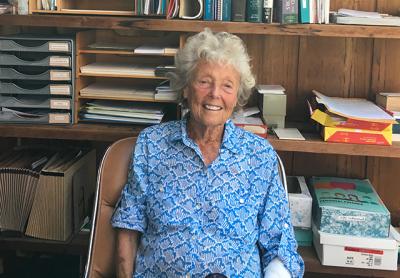Paddle Diva Stands Up — and Wins
Paddle Diva Stands Up — and Wins

“I feel like I can breathe again,” Gina Bradley, the owner of Paddle Diva, said this week of a state supreme court ruling that the East Hampton Town Zoning Board of Appeals erred when it barred her from running her business from the Shagwong Marina on Three Mile Harbor.
Paddle Diva has offered paddleboard lessons, rentals, and tours from the marina since 2012, but in 2016, the town’s head building inspector concluded that her operation constituted an expansion of the marina’s use beyond what is allowed under town code. She appealed to the zoning board to reverse that decision, but failed.
Much of the board’s decision rested on whether a paddleboard was defined as a boat or a vessel. If it was a boat, it determined in its decision, then it must be stored in a boatyard, not a marina such as Shagwong. That would have meant that Ms. Bradley would have to operate out of a boatyard rather than the marina. Alternatively, she would have been able to launch the boards from public access ramps.
She was ready to throw in the towel and start a new career, she said this week, and even got her real estate license. But a friend, Dianne Le Verrier, who is also an attorney with Jordan & Le Verrier, convinced her not to give up without a fight. With Ms. Le Verrier representing her, she challenged the board’s ruling in New York State Supreme Court. “Everybody told me not to do it,” Ms. Bradley recalled this week.
Ms. Le Verrier and the town’s attorney, Michael Sendlenski, presented oral arguments in Central Islip last Thursday before New York State Supreme Court Justice H. Patrick Leis III. In a swift rebuke to the town, Justice Leis ruled from the bench in Paddle Diva’s favor immediately after hearing the arguments.
Ms. Le Verrier said it was the first time in her experience that a judge so swiftly rendered a verdict after hearing oral arguments in such a case. Usually, she said, it takes six months or more after oral arguments are heard before a decision is rendered. The judge, she said, found the zoning board’s decision “unreasonable and arbitrary” and annulled it.
Ms. Bradley was not in the courtroom.
Mr. Sendlenski would not comment on the ruling this week, saying he needed to brief the Z.B.A. members in an executive session first. Justice Leis has not yet released the written version of his decision, and the court reporter at the time is now on vacation, meaning the minutes of the proceedings are not yet available.
“This has been a drain on me,” Ms. Bradley said Monday. The fact that she could do business at all this year was only because of a last-minute agreement with the town, after Ms. Le Verrier filed a motion for the town to show cause. But until things were resolved, she was reluctant to put too much money into the business. “It was almost like I was on trial,” Ms. Bradley said.
With the decision last Thursday, “Now it’s on my terms,” she said, “and I get to decide what I do next. I can really get back to work.”
Ms. Le Verrier credits the work of Rick Whalen, the attorney who argued Ms. Bradley’s case before the Z.B.A., as being key to Paddle Diva’s victory. “Rick did a great job,” she said. “He made all of the arguments that needed to be made.”
Now, Ms. Bradley said, she can get back to her mission, which is “to inspire people to get on the water.”





